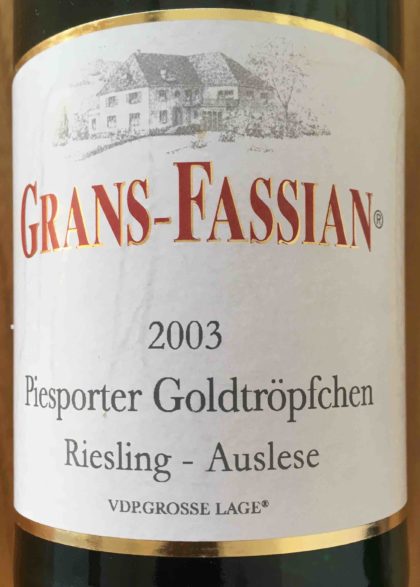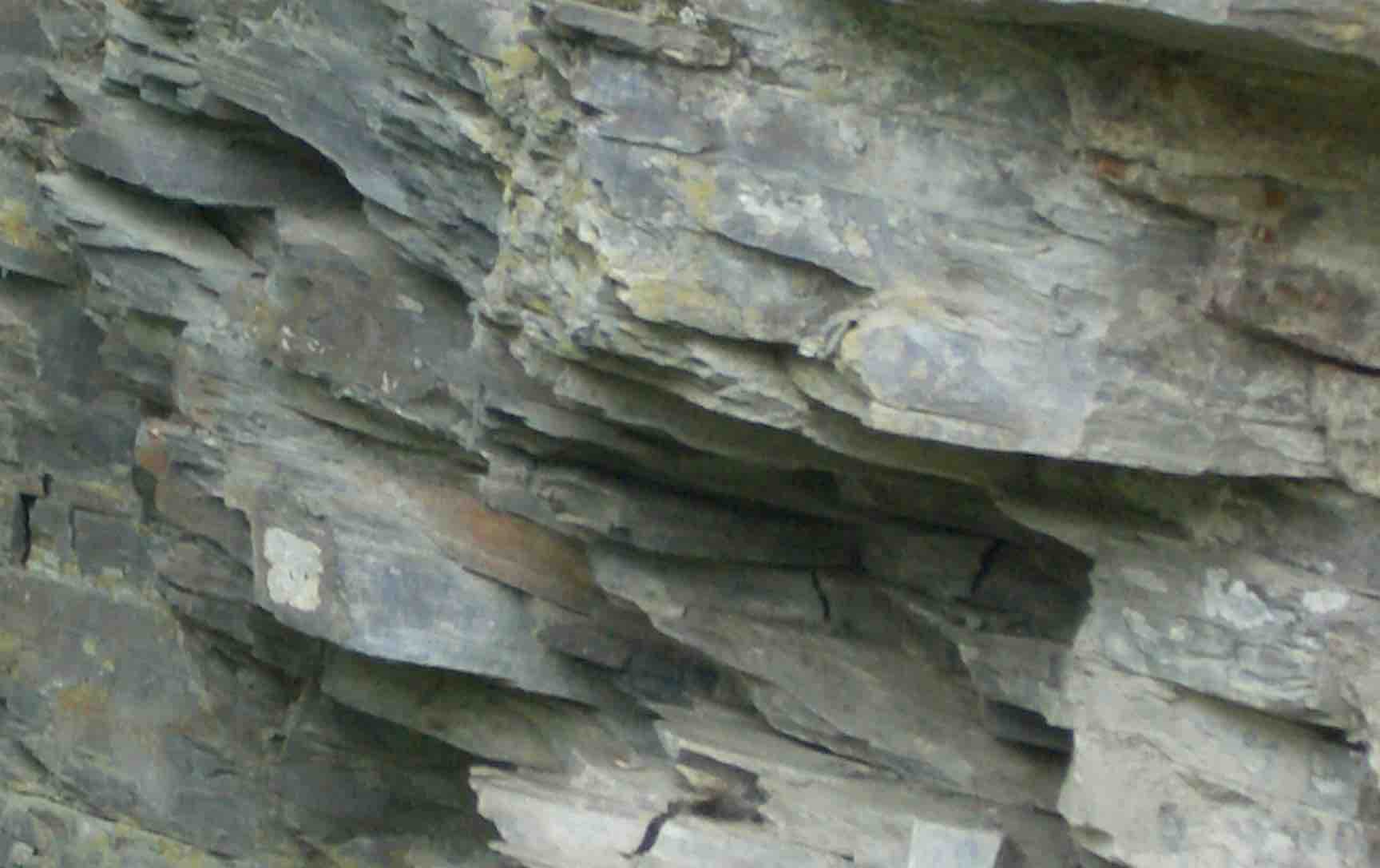The Moselle wine-growing region has six viticultural subareas (Cochem Castle {Terrassenmosel}, Bernkastel {Middle Mosel}, Saar, Ruwer, Upper Moselle, Moseltor). With 5,685 hectares, the Middle Mosel is its largest wine-growing area and at the same time the heart of the Moselle cultivation area. Many well-known vineyard locations can be found along the approximately 100 kilometers of the river, their steep slopes mostly on Devonian slate, which can be gray, blue or red. The grapes for the 2003 Riesling Auslese Piesporter Goldtröpfchen from the Grans-Fassian winery grow on a gray-blue slate soil, interspersed with quartz and minerals

The Grans-Fassian winery, founded in 1624, is currently in the 13th generation of family ownership. Around 90% is the share of Riesling planted on the 12 hectares of vineyards of the Winery. A total of four Grosse Lagen classified according to the VDP association are managed by the winery, – in addition to the Piesporter Goldtröpfchen these are Leiwener Laurentiuslay, Trittenheimer Apotheke and Dhroner Hofberg – all with steep slopes with a gradient of about 60 – 65% and slate soils of different colours.
Riesling Auslese Piesporter Goldtröpfchen 2003, Grans-Fassian (Tasted Wines)
Golden yellow, on the nose botrytis and delicate oxidative notes, on the palate citrus notes, botrytis, exotic fruit, passion fruit, fine sweetness, well balanced by the fresh but ripe acidity, delicate mineral notes, in the long finish with delicate spice and oxidative, underlaid with botrytis notes, very good wine.
